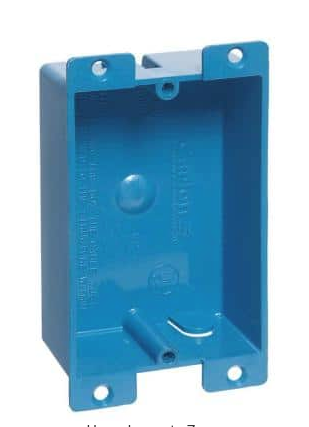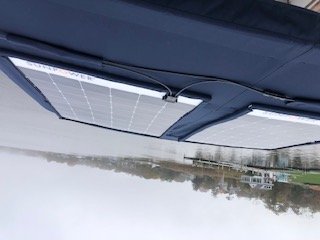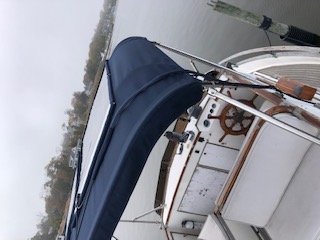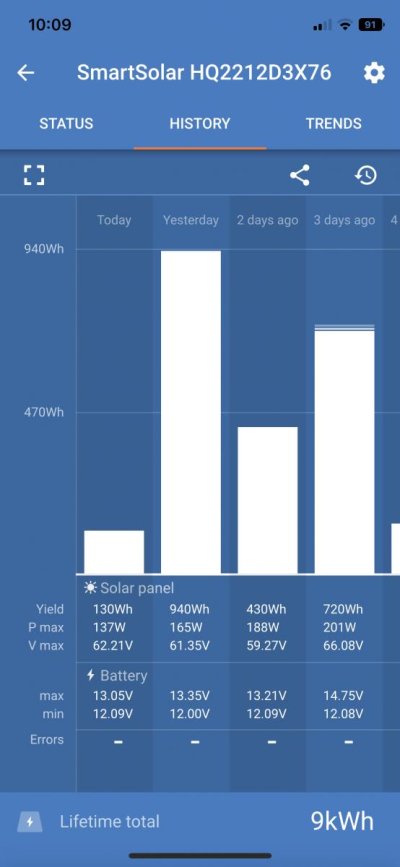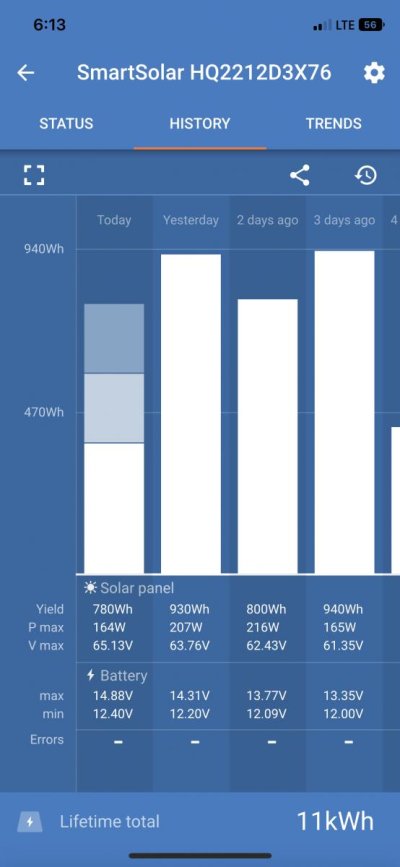Mike GB32
Senior Member
I've searched high and low for the answer to this question and found nothing. I'm hoping someone here can help.
I'm installing 340 watts of solar on the bimini. I know that I need to use MC4 connectors and PV cable from the panels.
My question is:could I run the PV cable to the interior of the boat, end at a terminal strip or junction box and then continue with marine duplex wire to the controller?
I'm thinking it would be easier to run the duplex wire through the boat instead of the heavier PV cables. I'll be using 10 gage wire to carry about 60 volts at 6 amps.
Is there an ABYC standard for this?
I'm installing 340 watts of solar on the bimini. I know that I need to use MC4 connectors and PV cable from the panels.
My question is:could I run the PV cable to the interior of the boat, end at a terminal strip or junction box and then continue with marine duplex wire to the controller?
I'm thinking it would be easier to run the duplex wire through the boat instead of the heavier PV cables. I'll be using 10 gage wire to carry about 60 volts at 6 amps.
Is there an ABYC standard for this?

